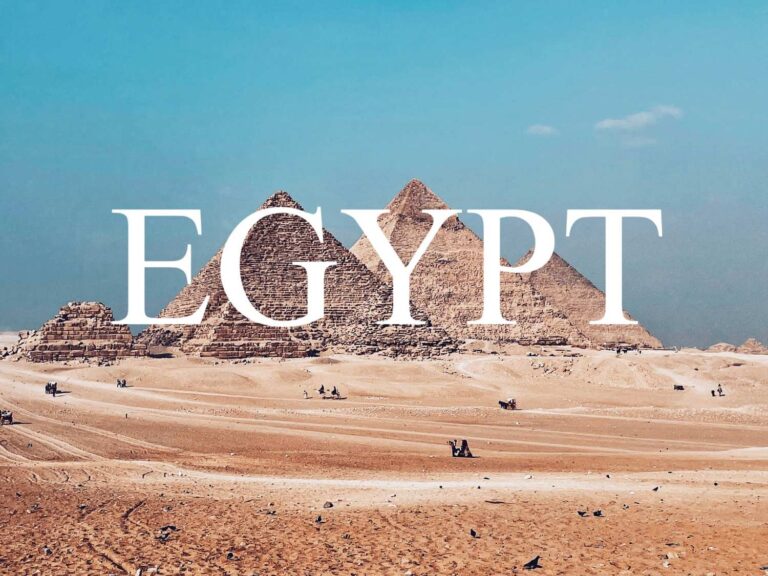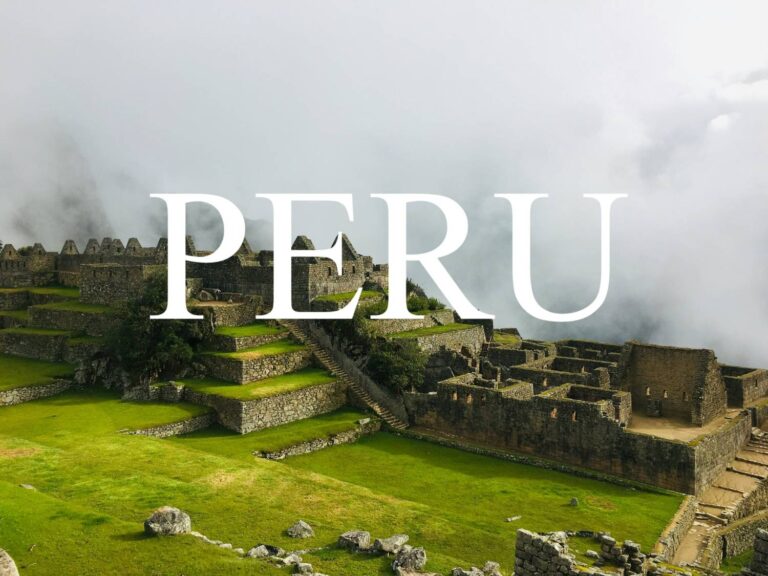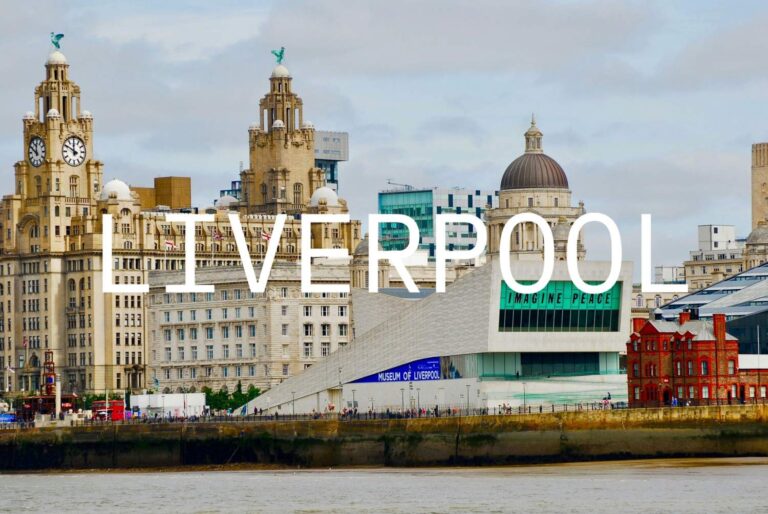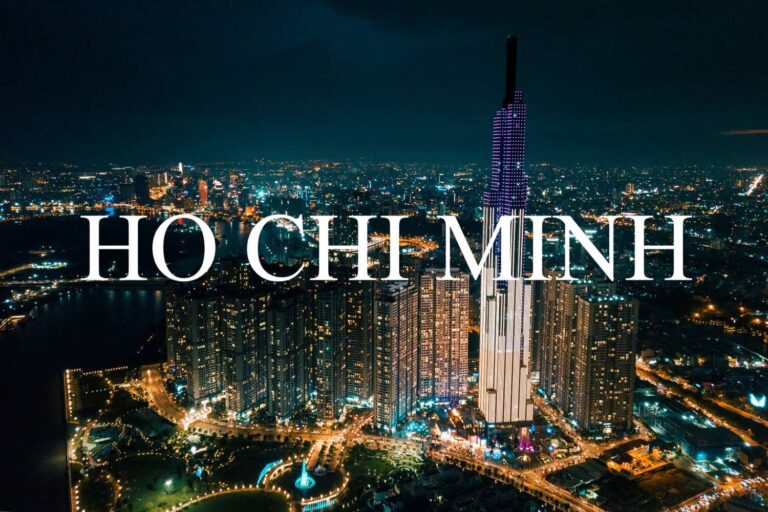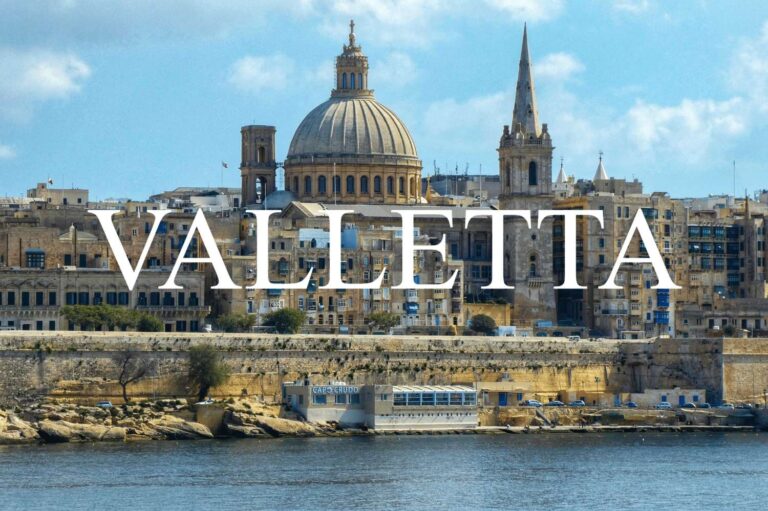
Welcome to Belgrade, the lively capital of Serbia where centuries of history meet a bold, modern energy. Set at the confluence of the Danube and Sava rivers, this dynamic city offers a unique blend of East and West, tradition and rebellion, charm and grit.
From ancient fortresses and Ottoman relics to buzzing cafés and world-famous nightlife, Belgrade is a place that feels alive day and night. Ride a vintage tram through its historic streets, watch the sunset from Kalemegdan Fortress, or explore neighborhoods like Skadarlija, Dorćol, and Savamala, each with their own personality and rhythm.
Whether you’re sipping strong coffee in a sunlit square or dancing on a floating river club until sunrise, Belgrade draws you in with its warmth, creativity, and raw authenticity. It may not always be polished — but that’s exactly what makes it unforgettable.
🗓️ Best Time to Visit Belgrade
Belgrade is a year-round destination, but spring and autumn offer the perfect balance of good weather and fewer crowds.
- 🌸 Spring (April–June): Green parks, blossoming trees, and mild temperatures. Perfect for strolling and open-air cafés.
- ☀️ Summer (July–August): Hot and lively — this is peak party season, especially at river clubs (splavs).
- 🍂 Autumn (September–October): Crisp air, golden foliage, and cultural events in full swing.
- ❄️ Winter (November–February): Cold but festive. Great for exploring museums and warming up with mulled rakija.
💶 Currency & Travel Essentials
- Currency: Serbian Dinar (RSD)
- Language: Serbian (Cyrillic & Latin script) — English is widely understood in tourist areas
- Transportation: Cheap and efficient buses, trams, and trolleybuses; walkable city center
- Daily Budget:
- Budget: €30–€50/day
- Mid-range: €60–€90/day
- Luxury: €120+/day
💡 Travel Tip: Get a BusPlus card for public transport — it’s cheap, reloadable, and works on all trams and buses.
🌆 Top 10 Best Places to Visit in Belgrade
Kalemegdan Fortress & Park
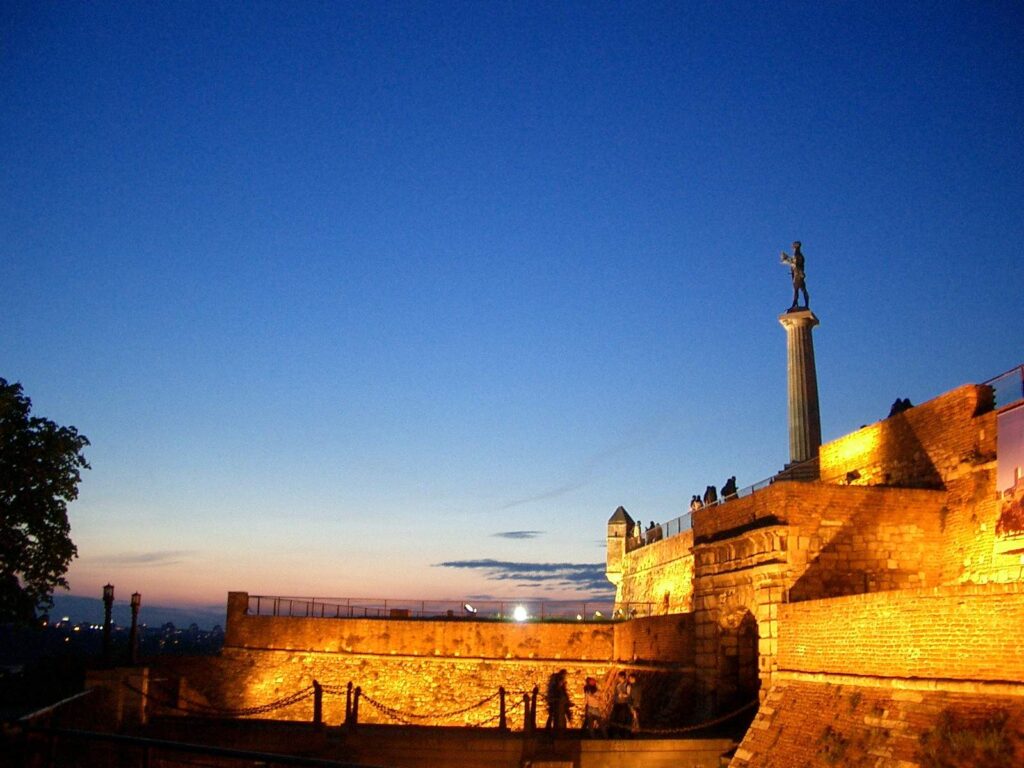
Nestled in the heart of Belgrade where the Sava and Danube rivers meet, Kalemegdan Fortress & Park stands as a powerful symbol of Serbian heritage, offering panoramic views, centuries of history, and a lush retreat from the city streets. This iconic destination is where past and present blend—ancient stone walls, open-air art, scenic promenades, and peaceful greenery all await. Whether you’re a history lover, casual stroller, or sunset chaser, Kalemegdan offers a rich and rewarding experience.
🌟 Highlights of Kalemegdan Fortress & Park
• 🏰 Historic Fortress & Monuments
Explore the sprawling Belgrade Fortress, a complex that has evolved through Roman, Byzantine, Ottoman, and Austrian hands. Discover the impressive Despot’s Gate, the towering Clock Tower, the haunting Roman Well, and the symbolic Pobednik (Victor) Monument, proudly overlooking the river junction.
• 🌳 Parkland & Open Spaces
Kalemegdan is more than a fortress—it’s a public park full of shaded paths, gardens, and sculptures. Locals come here to relax, walk dogs, play chess, or enjoy outdoor performances. It’s a peaceful green space ideal for unwinding and people-watching.
• 🖼️ Art, Culture & Exhibits
Within the park you’ll find the Cvijeta Zuzorić Art Pavilion showcasing modern Serbian art. Don’t miss the many historic sculptures like the Monument to France and Despot Stefan. For military enthusiasts, the open-air collection of tanks and cannons adds extra intrigue.
• 🦚 Wildlife and the Zoo
Part of Lower Kalemegdan is home to the Belgrade Zoo—one of the oldest in southeastern Europe. Peacocks roam freely near the entrance, adding a whimsical touch to your walk through the park.
• 🪖 Military Museum & Underground Sights
History comes alive at the Military Museum, featuring artifacts from Roman swords to modern weapons. You can also explore lesser-known spots like the underground bunkers, Gunpowder Magazine, and the mysterious Roman Well.
🚗 How to Get There
• By Foot:
Kalemegdan is just steps from Republic Square and Knez Mihailova Street, making it easily walkable from central Belgrade.
• By Public Transport:
Several bus and tram lines stop nearby—look for those heading to Kalemegdan, Trg Republike, or Studentski Trg.
• By Car or Taxi:
Limited parking is available near the fortress, but walking is the most convenient way to explore the area.
🕒 Visitor Information
• Entry: Free and open 24/7. Museums within the complex may have their own ticket prices and hours.
• Best Time to Visit: Spring to early autumn for pleasant weather and clear sunset views.
• Opening Hours: Outdoor areas are open year-round. Museums typically operate from 10:00 AM to 5:00 PM (closed on Mondays).
• Accessibility: Most paths are walkable, though some cobbled or inclined sections may be challenging for those with mobility issues.
💡 Travel Tips
• 📸 Capture the Views: Visit during golden hour for incredible photos overlooking the rivers and city skyline.
• 👟 Wear Comfortable Shoes: The area is large with uneven paths, so good footwear is essential.
• 🧥 Dress for the Weather: Bring a jacket if visiting in winter or late evening—winds can pick up on the fortress edge.
• 🗺️ Use a Map or Guided Tour: To avoid missing key monuments and museums, consider a guided walk or map app.
• 🌅 Don’t Miss Sunset: Head to the Victor Monument platform for one of the best views in all of Belgrade.
Kalemegdan Fortress & Park is a must-visit for anyone exploring Belgrade. It’s a place where history, culture, and nature come together in one unforgettable setting—perfect for reflection, photography, and discovering the Serbian spirit.
Knez Mihailova Street
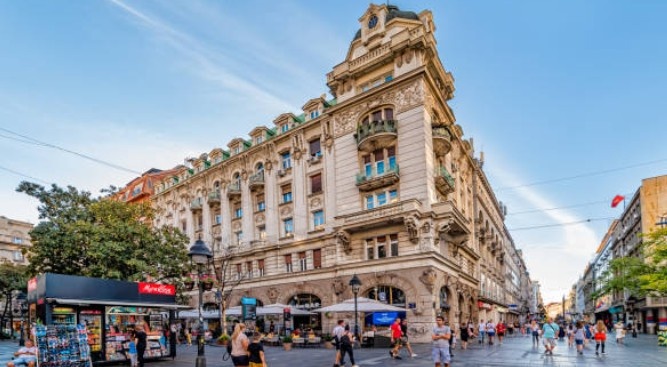
Located in the heart of Belgrade, Knez Mihailova Street (Knez Mihailova Ulica) is the city’s most famous pedestrian zone and shopping promenade. Lined with historic buildings, chic boutiques, lively cafés, and vibrant street performers, this iconic street connects the past and present, making it a must-visit destination for anyone exploring the Serbian capital.
Whether you’re strolling past 19th-century architecture, grabbing a coffee, or soaking in the lively atmosphere, Knez Mihailova offers a quintessential Belgrade experience filled with charm, culture, and convenience.
🌟 Highlights of Knez Mihailova Street
• 🏛️ Historic Architecture & Landmarks
Admire the beautifully preserved 19th-century buildings that house museums, libraries, and cultural institutions. The street is a showcase of Belgrade’s rich architectural heritage, with notable landmarks like the Serbian Academy of Sciences and Arts and the Art Pavilion “Cvijeta Zuzorić” nearby.
• 🛍️ Shopping & Boutiques
Knez Mihailova is Belgrade’s main shopping artery, offering everything from international brands to local designers. You’ll find fashion, books, souvenirs, and luxury goods in stylish storefronts spread across the pedestrian zone.
• ☕ Cafés & Street Life
Lined with cozy cafés, ice cream parlors, and casual eateries, the street is a perfect place to grab a drink, enjoy traditional Serbian pastries, or simply people-watch. Outdoor seating is plentiful, especially during warmer months.
• 🎭 Street Performers & Art
From musicians to portrait artists, the lively street is always buzzing with local talent and cultural energy. You might even catch open-air exhibits or live performances depending on the season.
• 🧭 Gateway to Kalemegdan
At the northern end, Knez Mihailova leads directly to Kalemegdan Fortress & Park, making it a natural part of most visitors’ walking route. It’s ideal for combining shopping, dining, and sightseeing in one seamless journey.
🚶 How to Get There
• On Foot:
Knez Mihailova Street is centrally located and entirely pedestrianized, best explored by walking from Republic Square or Kalemegdan.
• By Public Transport:
Nearby stops like Trg Republike and Studentski Trg are serviced by many bus and tram lines. From there, it’s a short walk to the street.
• By Taxi or Car:
As the street is closed to vehicles, taxis can drop you off at surrounding streets such as Obilićev Venac or Pariska Street.
🕒 Visitor Information
• Opening Hours:
Shops and cafés generally open from 9:00 AM to 9:00 PM, though many restaurants and bars stay open late into the evening.
• Best Time to Visit:
Evenings and weekends are especially lively, while mornings offer a quieter, more relaxed atmosphere for photography or exploration.
💡 Travel Tips
• 🎨 Explore Side Alleys:
Hidden galleries, bookstores, and artisan shops are tucked just off the main promenade—worth discovering.
• 📷 Don’t Forget Your Camera:
The mix of neoclassical facades, vibrant street scenes, and historic charm make it a dream for street photography.
• 🧥 Dress Comfortably:
Wear good walking shoes, especially if you plan to continue onward to Kalemegdan or nearby museums.
• 🕯️ Visit at Night:
The street comes alive after dark with warm lighting, music, and bustling terraces that create an inviting and romantic ambiance.
Knez Mihailova Street is more than just a place to shop—it’s where Belgrade’s culture, history, and daily life come together. With its architectural beauty, energetic vibe, and central location, it serves as both a beloved meeting point and a cultural artery of the city. Whether you’re window-shopping, enjoying a drink, or heading toward Kalemegdan, Knez Mihailova is a walk through the very soul of Belgrade.
Skadarlija – The Bohemian Quarter
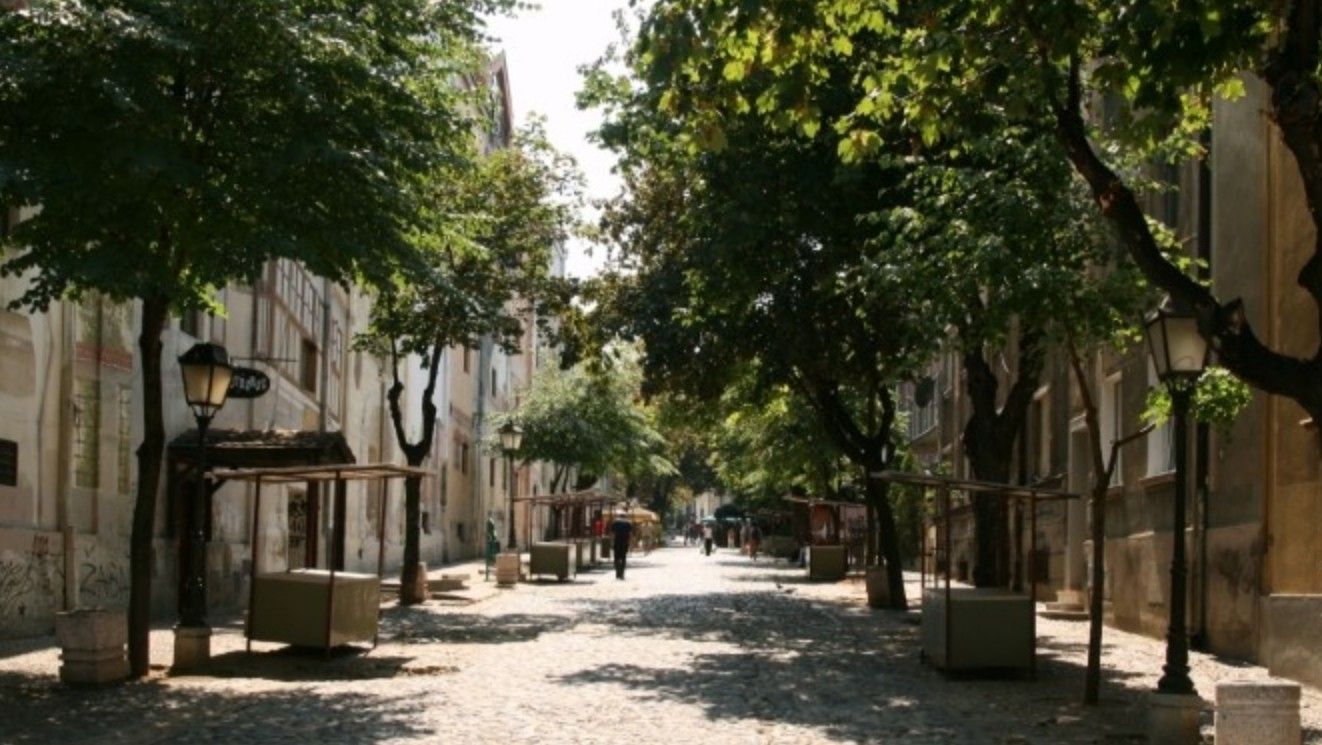
Tucked away in the heart of Belgrade, Skadarlija is the city’s beloved Bohemian Quarter, a cobbled street filled with old-world charm, lively music, traditional Serbian cuisine, and a romantic atmosphere that has remained untouched by time. Often compared to Montmartre in Paris, this historic district has long been a haven for poets, artists, and free spirits. Whether you’re in the mood for rakija, live tamburica bands, or simply a slow walk through history, Skadarlija offers a truly enchanting experience.
🌟 Highlights of Skadarlija – The Bohemian Quarter
• 🎶 Traditional Music & Bohemian Vibe
As you stroll down the cobblestone street, you’ll be serenaded by live folk musicians playing tamburicas and accordions. The sound of laughter and clinking glasses fills the air, especially in the evenings when the street truly comes alive with energy and warmth.
• 🍽️ Authentic Serbian Cuisine
Skadarlija is famous for its historic kafanas (traditional taverns), many dating back to the 19th century. Enjoy hearty Serbian dishes like ćevapi, sarma, roast lamb, and freshly baked bread alongside rakija or local wine. Popular spots include Tri Šešira, Dva Jelena, and Šešir Moj.
• 🖼️ Art, Culture & Legacy
Once a gathering place for writers and painters, Skadarlija still exudes artistic flair. You’ll find murals, old signage, and galleries nestled among the restaurants. The legacy of famed Serbian poets like Đura Jakšić lives on—his former home still stands here as a cultural monument.
• 🌸 Romantic Atmosphere & Architecture
With its vintage gas lamps, ivy-covered facades, and floral balconies, Skadarlija is ideal for a romantic evening or a peaceful midday stroll. It’s a popular spot for couples, street performers, and photographers seeking timeless charm.
• 🎨 Seasonal Events & Festivals
Throughout the year, Skadarlija hosts cultural festivals, art shows, and food events that celebrate Serbian traditions and community life. During the summer, the street often transforms into an open-air stage for performances and folk dancing.
🚶 How to Get There
• By Foot:
Skadarlija is located just a short walk from Republic Square and Knez Mihailova Street, making it easy to find on foot while exploring central Belgrade.
• By Public Transport:
Nearby bus and tram stops at Trg Republike and Skadarska provide easy access from other parts of the city.
• By Taxi:
Taxis can drop you off at the entrance of the pedestrian street; from there, it’s a short and scenic walk.
🕒 Visitor Information
• Best Time to Visit:
Evenings are magical, especially on weekends when live music and vibrant crowds bring the street to life. Spring through autumn offers the best weather for outdoor dining.
• Opening Hours:
Most restaurants and taverns open by noon and remain lively late into the night, especially Thursday to Sunday.
• Accessibility:
The street is cobbled and slightly inclined, so it may be challenging for wheelchairs or strollers. Comfortable shoes are recommended.
💡 Travel Tips
• 📷 Bring a Camera:
Skadarlija’s vintage charm and artistic vibe make it one of Belgrade’s most photogenic spots.
• 🍷 Try the Rakija:
Don’t leave without sampling Serbia’s famous fruit brandy—available in many flavors at the taverns.
• 🧾 Cash is Useful:
While many places accept cards, it’s handy to carry some Serbian dinars, especially for tipping musicians or visiting small galleries.
• 🎨 Visit During a Festival:
Check local event calendars for Skadarlija nights or cultural weeks to enjoy special programs and street performances.
Skadarlija is more than just a street—it’s Belgrade’s poetic soul, filled with tradition, flavor, and joy. Whether you’re sipping rakija under the lantern glow or enjoying a slow dinner surrounded by music, this charming quarter offers an unforgettable taste of Serbia’s warm, bohemian heart.
Saint Sava Temple
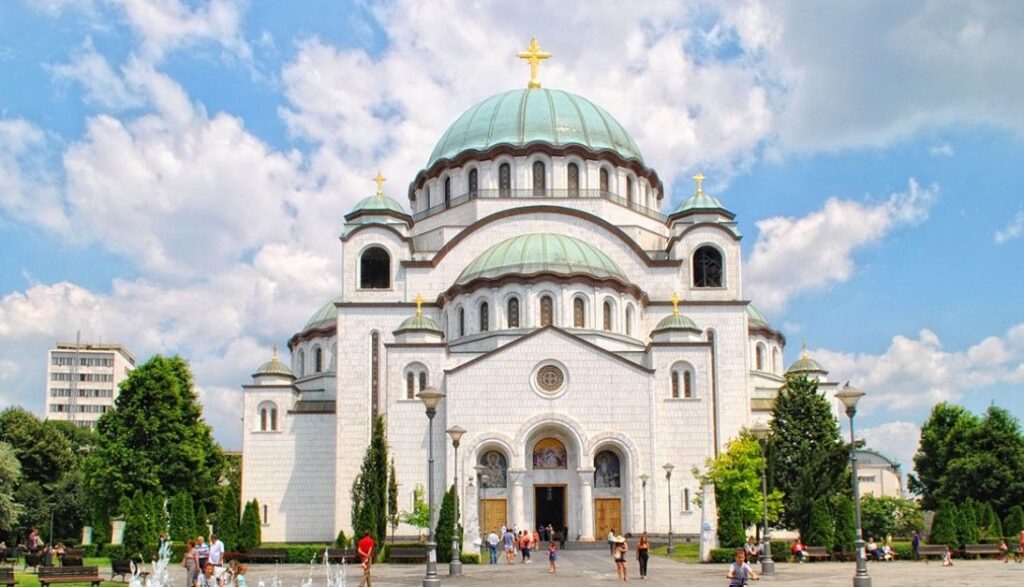
Dominating the Belgrade skyline with its gleaming white domes and golden crosses, the Temple of Saint Sava is one of the largest Orthodox churches in the world. Dedicated to Saint Sava, the founder of the Serbian Orthodox Church, this magnificent landmark is both a place of worship and a symbol of Serbian national identity. With its grand design, spiritual ambiance, and cultural significance, the temple offers a deeply moving experience for visitors of all backgrounds.
🌟 Highlights of Saint Sava Temple
• ⛪ Architectural Marvel
Inspired by Byzantine design and modeled after the Hagia Sophia, Saint Sava Temple is an architectural masterpiece. The massive central dome reaches 70 meters in height and is topped with a 12-meter golden cross. The structure can accommodate more than 10,000 worshippers and is adorned with white marble and granite on the exterior.
• 🎨 Stunning Interior Mosaics
Inside, visitors are awestruck by the breathtaking mosaics that cover the walls and ceilings. The most remarkable is the mosaic of Christ Pantocrator in the main dome, one of the largest of its kind in the world. Crafted with millions of colored tiles and gold leaf, these artworks reflect the grandeur and sacredness of Orthodox tradition.
• 🕊️ Underground Crypt and Chapel
Beneath the main church lies a vast underground crypt and the Church of Saint Lazar, richly decorated with icons, frescoes, and chandeliers. The crypt houses the tomb of Saint Sava’s relics and offers a peaceful, contemplative space steeped in spiritual symbolism.
• 🌳 Vračar Plateau and Park
The church is set within the beautifully landscaped Vračar Plateau, a serene park space featuring fountains, benches, and sculptures. It’s a great place to relax, reflect, and take in views of the temple from different angles.
• 🕍 Cultural and National Significance
Saint Sava Temple is more than a religious site—it’s a national symbol that reflects Serbia’s resilience, faith, and cultural heritage. It stands on the very spot where the Ottomans allegedly burned the relics of Saint Sava in 1595, making the temple a place of deep historical reverence.
🚶 How to Get There
• By Foot or Bike:
Located in the Vračar district, the temple is a 20–30 minute walk from Republic Square or a short bike ride through Belgrade’s central neighborhoods.
• By Public Transport:
Multiple buses and trolley lines stop near the temple. Look for stops at “Slavija Square,” which is a 5-minute walk away.
• By Taxi or Car:
Taxis can drop you off at the entrance. Paid parking is available in the surrounding area, though it can be limited during busy hours.
🕒 Visitor Information
• Opening Hours:
The temple is open daily from early morning until evening, generally around 7:00 AM to 8:00 PM. The underground crypt may have separate opening times.
• Entrance Fees:
Entry to the main church is free. Donations are welcome. Guided tours may be available for a small fee or by prior arrangement.
• Dress Code:
As with all places of worship, modest attire is recommended. Head coverings are not required but appreciated during services.
💡 Travel Tips
• 📸 Visit During Golden Hour:
The exterior shines beautifully at sunrise or sunset—perfect for stunning photos with soft lighting and dramatic skies.
• 🙏 Respect the Silence:
While photography is usually allowed, maintain a respectful silence, especially if a service is in progress.
• 💶 Bring Small Cash:
For lighting candles, donating, or buying souvenirs at the small gift shop nearby.
• 🌙 See It Lit Up at Night:
The temple looks spectacular after dark, when its domes and crosses are illuminated—creating a serene and majestic atmosphere.
Saint Sava Temple is not just a religious landmark—it’s a powerful cultural icon that embodies Serbia’s history, spirit, and artistic brilliance. Whether you’re admiring the mosaics, attending a service, or relaxing in the surrounding gardens, the temple invites both quiet reflection and deep admiration. A must-see when visiting Belgrade.
Republic Square & National Museum
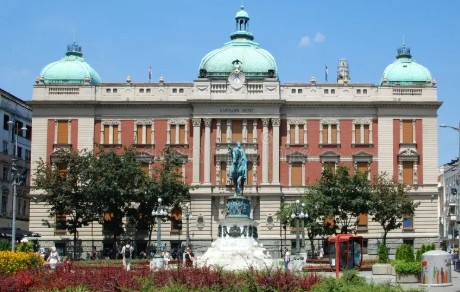
Located in the center of Belgrade, Republic Square (Trg Republike) is the city’s most iconic public space—bustling with energy, history, and culture. Flanked by grand buildings, statues, and cafes, it serves as a natural gathering point for locals and tourists alike. At its heart stands the National Museum of Serbia, the country’s most prestigious cultural institution, offering a deep dive into Serbian and global art history. Whether you’re people-watching, attending an event, or exploring centuries of artistic heritage, Republic Square is a must-see in Belgrade.
🌟 Highlights of Republic Square & the National Museum
• 🏛️ National Museum of Serbia
Founded in 1844, the museum houses over 400,000 artifacts—from prehistoric tools and medieval icons to Renaissance masterpieces and modern art. Notable works include paintings by Picasso, Monet, Rembrandt, and Serbian greats like Paja Jovanović and Uroš Predić. Don’t miss the Miroslav Gospel, a 12th-century illuminated manuscript considered one of Serbia’s most important cultural treasures.
• 🐎 Prince Mihailo Monument
At the center of Republic Square stands the famous equestrian statue of Prince Mihailo Obrenović, pointing toward the former Ottoman territories as a symbol of liberation. Erected in 1882, it’s not just a landmark—it’s also a popular meeting point for Belgraders.
• 🎭 National Theatre
Right across from the museum is the National Theatre, a stunning neo-baroque building established in 1869. It hosts opera, ballet, and dramatic performances throughout the year. Even if you don’t attend a show, the façade and evening lights make it worth a visit.
• ☕ Cafés, Shops & Street Life
Surrounding the square are cozy cafés, restaurants, and boutiques where you can relax, enjoy a drink, or watch street performers. It’s a great place to take a break, especially in the late afternoon when the area is buzzing with life.
• 🖼️ Outdoor Events & Exhibitions
Republic Square often hosts concerts, art installations, and cultural celebrations. The pedestrian-friendly space is designed for public gatherings and is beautifully lit in the evenings.
🚶 How to Get There
• By Foot:
Located at the end of Knez Mihailova Street, Republic Square is easily walkable from most central Belgrade attractions.
• By Public Transport:
Numerous buses and trams stop at or near the square. Look for stops labeled “Trg Republike” or “Studentski Trg.”
• By Taxi:
Taxis can drop you off directly at the square, though traffic may be busy during peak hours.
🕒 Visitor Information
• Museum Hours:
Typically open Tuesday to Sunday, 10:00 AM – 6:00 PM (closed Mondays). Check the official website for holiday hours or special exhibitions.
• Tickets:
Entrance fees are modest, with discounts available for students and seniors. Free admission is offered on the first Sunday of every month.
• Best Time to Visit:
Visit in the morning to avoid crowds in the museum, or come in the evening to enjoy the atmosphere and lights around the square.
• Accessibility:
The museum is wheelchair-accessible and features elevators and ramps. The square itself is flat and pedestrian-friendly.
💡 Travel Tips
• 📷 Take Photos at Sunset:
The golden hour adds a warm glow to the buildings and statues—perfect for photography.
• 🗺️ Use it as a Hub:
Republic Square is a great starting point for walking tours of Belgrade, as it connects to Knez Mihailova Street, Kalemegdan, and Skadarlija.
• 🎟️ Check for Live Events:
Look up local listings—you might catch an outdoor concert, protest, or cultural event.
• 🖌️ Spend Time in the Museum Café:
The museum café is a quiet, art-filled spot for coffee or a quick bite between exhibits.
Republic Square and the National Museum are more than landmarks—they’re the cultural heartbeat of Belgrade. Whether you’re exploring masterpieces inside or soaking up the lively urban energy outside, this central hub captures the spirit and soul of the Serbian capital.
Ada Ciganlija (Belgrade Sea)
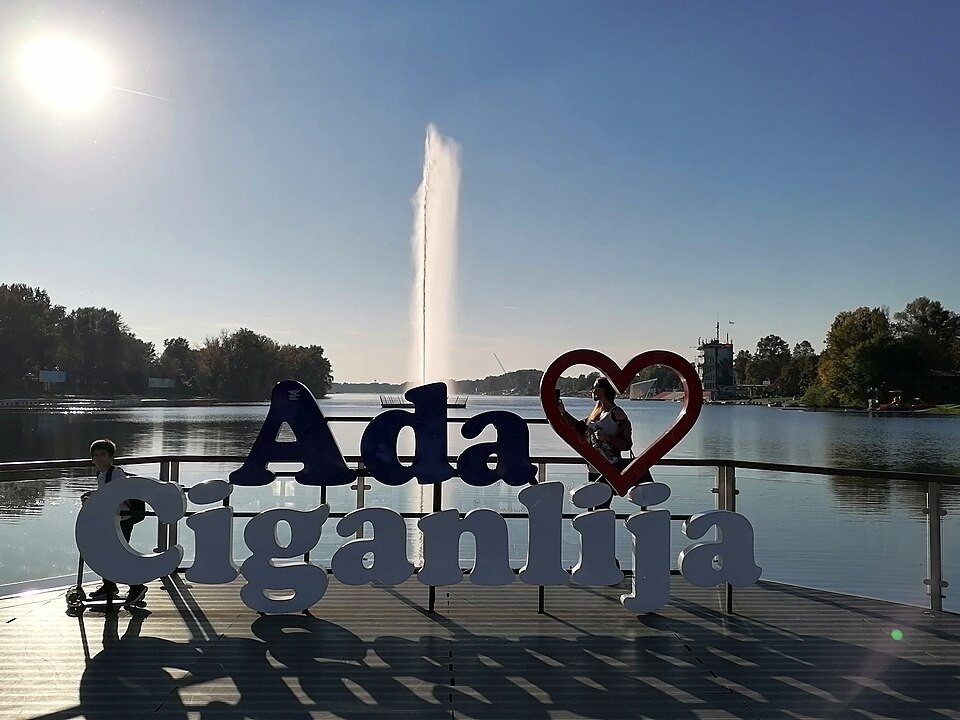
Often referred to as the “Belgrade Sea,” Ada Ciganlija is the city’s beloved river island turned peninsula, offering a vibrant mix of recreation, relaxation, and nature right in the heart of the capital. With its tree-lined shores, sandy beaches, bike trails, and buzzing waterfront cafés, Ada is where locals escape to cool off, work out, or unwind—especially during the warm summer months.
Whether you’re into sunbathing, kayaking, zip-lining, or just enjoying a lakeside cocktail, Ada Ciganlija has something for everyone.
🌟 Highlights of Ada Ciganlija
• 🏖️ Urban Beach & Swimming
Ada’s gravel and sandy beaches stretch for nearly 8 kilometers along the man-made Sava Lake. Monitored by lifeguards and equipped with showers and changing cabins, the beach area is ideal for a refreshing dip, sunbathing, or simply lounging with friends and family.
• 🚴 Outdoor Sports & Activities
With facilities for over 50 different sports, including tennis, basketball, mini golf, wakeboarding, and even bungee jumping, Ada is a dream for fitness lovers. Rent a bike or rollerblades and cruise along the smooth 7-kilometer trail that circles the lake.
• 🛶 Water Sports
The calm waters of Sava Lake are perfect for kayaking, paddleboarding, canoeing, and rowing. Equipment rentals are available along the shore, and beginners are welcome. During summer, you can also enjoy water skiing and windsurfing.
• 🌳 Nature & Green Spaces
Surrounded by dense forest and shaded picnic areas, Ada offers a refreshing natural escape. Wildlife, birdwatching opportunities, and quiet coves make it just as attractive to nature lovers as it is to adrenaline seekers.
• 🍹 Bars, Cafés & Floating Restaurants
Dozens of waterfront cafés, bars, and floating river rafts (called splavovi) serve up food, drinks, and music throughout the day. Whether you’re after a fresh smoothie or a sunset cocktail, the atmosphere is always lively and laid-back.
🚶 How to Get There
• By Bike or Foot:
A popular way to reach Ada is by walking or cycling from New Belgrade or the city center. Dedicated bike lanes make it safe and accessible.
• By Public Transport:
Multiple city bus lines (e.g., 23, 37, 51, 52, 53, 56, 58, 88, 89, 91, 92, 511) stop at Ada Ciganlija. Look for stops near the entrance bridge.
• By Car:
Parking is available around the area, though it can fill up quickly on weekends. Arriving early is recommended during the summer season.
🕒 Visitor Information
• Opening Hours:
Open 24/7 as a public space. Sports facilities, rentals, and restaurants generally operate from 9:00 AM to 10:00 PM during peak season.
• Best Time to Visit:
Late spring through early autumn is ideal for outdoor activities and beach fun. Summer weekends are the liveliest, while weekday mornings offer more peace.
• Entry Fee:
Free access to the beach and park areas. Some activities and rentals may have a fee.
💡 Travel Tips
• 🧴 Bring Sunscreen & Swimwear:
The summer sun can be intense—come prepared with a towel, water bottle, and beach essentials.
• 🧺 Pack a Picnic:
Picnic tables and grassy spots are plentiful, or bring a blanket and enjoy lunch by the lake.
• 🎒 Secure Your Belongings:
During busy days, keep valuables safe or leave them at home when swimming or doing sports.
• 📷 Stay for Sunset:
The sunsets over Sava Lake are absolutely magical—perfect for a memorable photo or a quiet moment by the water.
Ada Ciganlija is Belgrade’s summer playground—a place where city life meets outdoor adventure. Whether you’re looking to cool off in the lake, join a beach volleyball match, or sip coffee with your feet in the sand, the “Belgrade Sea” is a must-visit destination that captures the fun, vibrant spirit of the city.
Nikola Tesla Museum
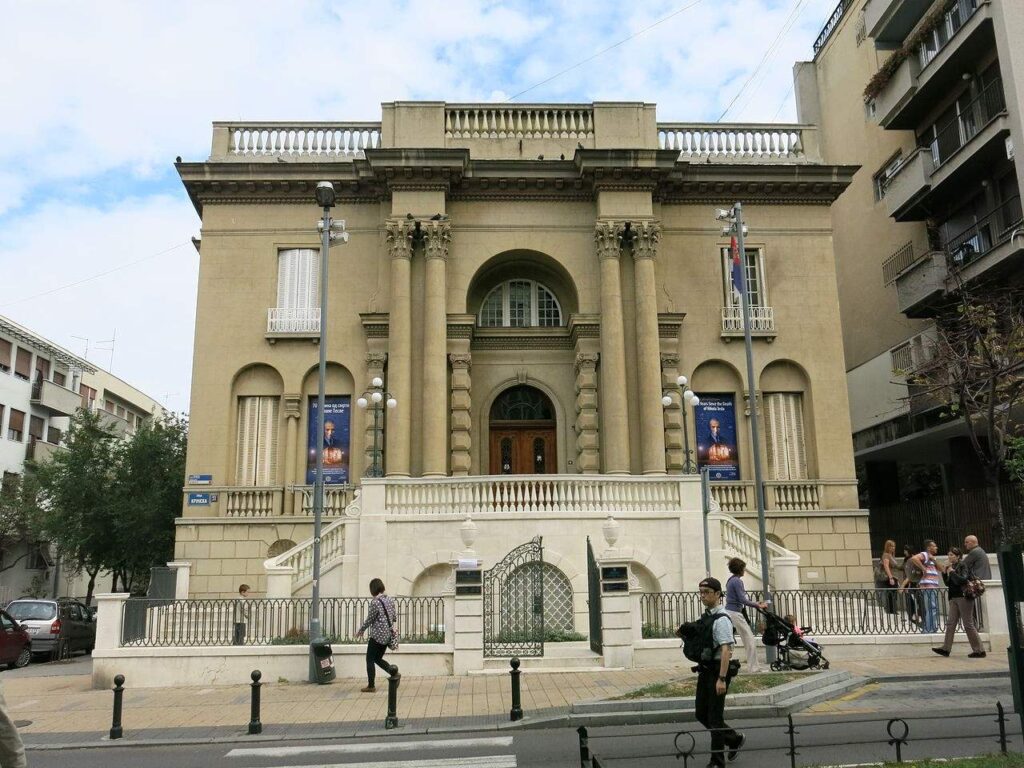
In the heart of Belgrade’s elegant Vračar district lies one of the most fascinating and intellectually inspiring places in Serbia — the Nikola Tesla Museum. Dedicated to the life and legacy of one of the world’s greatest inventors, this museum offers a captivating look into the mind of the Serbian-American genius who revolutionized the modern world with alternating current, wireless transmission, and more. Whether you’re a science enthusiast, history buff, or simply curious, this museum delivers an unforgettable experience filled with sparks — quite literally.
🌟 Highlights of the Nikola Tesla Museum
• ⚡ Interactive Exhibits & Live Demos
One of the most exciting parts of visiting the Nikola Tesla Museum is watching Tesla’s inventions come to life. The Tesla coil demonstration is a crowd favorite, showing how electricity can be transmitted wirelessly. There are also working models of Tesla’s inventions that allow visitors to get hands-on with science in a fun, educational way.
• 📜 Original Documents & Artifacts
The museum holds the largest collection of Tesla’s personal belongings — over 160,000 original documents, photographs, books, blueprints, and technical instruments. Many of these items are displayed in pristine condition, offering rare insight into his genius and the groundbreaking work that shaped the future.
• 🎥 Guided Tours with Short Film
Your visit includes a short introductory film (available in English and Serbian) that narrates Tesla’s incredible journey from a small town in modern-day Croatia to the world stage. Knowledgeable guides then lead you through the museum, offering stories and background that bring the exhibits to life.
• 🏛️ Elegant Historical Setting
The museum is located in a 1929 residential villa, adding an extra layer of charm to the experience. Tesla’s urn is also housed here, making it both a scientific and symbolic tribute to his legacy.
• 🌍 UNESCO-Recognized Archive
Tesla’s works preserved here have been included in UNESCO’s Memory of the World list, confirming their global significance and impact on human progress.
🚶 How to Get There
• By Public Transport:
Take trams (2, 10, 12, 14) or buses (24, 26, 27) to Slavija Square or Pravni Fakultet. The museum is just a short walk from there.
• By Taxi or Car:
You can easily reach the museum by taxi. Limited street parking is available around the area — Zone 2 (paid via SMS for up to 120 minutes).
• On Foot or by Bike:
It’s a pleasant 15–20-minute walk from Republic Square or Knez Mihailova. There are also nearby bike racks if you’re cycling.
🕒 Visitor Information
• Opening Hours:
Monday: 10:00 AM – 6:00 PM
Tuesday to Sunday: 10:00 AM – 8:00 PM
• Tickets & Tours:
Admission is around 500 RSD (approx. €4), and cash only is accepted. No reservations needed for individuals. Guided tours start every hour and include both the film and Tesla coil demonstration.
• Time Required:
Plan to spend about 1.5 to 2 hours to enjoy the full experience, including the tour, demo, and exhibits.
• Accessibility:
The museum is wheelchair accessible and has elevators. Photography is allowed.
💡 Travel Tips
• 🎧 Don’t Skip the Guided Tour:
It’s the best way to get the full story behind each exhibit and enjoy the demonstrations.
• 📸 Capture the Moment:
Bring a camera or phone — the sparks from the Tesla coil and the classic interiors are very Instagram-worthy.
• 💵 Carry Cash:
The museum does not accept cards, so bring enough Serbian dinars to cover your entry and possibly a small souvenir.
• ⏰ Visit Early for Fewer Crowds:
Morning hours (especially right at opening) are quieter and more relaxed.
• 🎁 Stop by the Museum Shop:
Take home a book, miniature Tesla coil, or science-themed souvenir to remember your visit.
The Nikola Tesla Museum is not just a stop on your Belgrade itinerary — it’s a journey into the brilliance of a man who changed the world. It’s educational, awe-inspiring, and deeply personal. Whether you’re a solo traveler, family with kids, or curious explorer, this museum offers a meaningful experience that sparks both imagination and admiration.
Zemun & Gardoš Tower
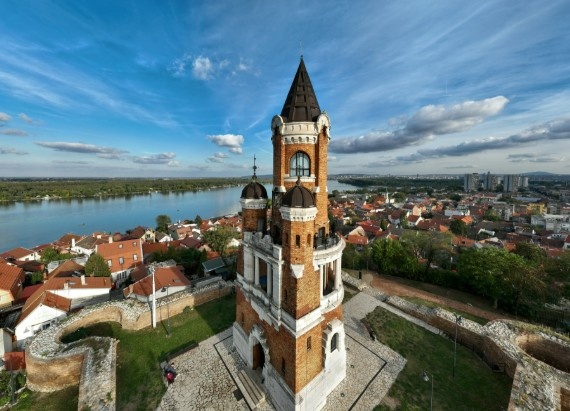
Located on the banks of the Danube River, Zemun is one of Belgrade’s most charming and historic neighborhoods, known for its cobblestone streets, Austro-Hungarian architecture, and village-like atmosphere. Perched above the town is the iconic Gardoš Tower, offering panoramic views and a window into the area’s rich cultural legacy. Together, Zemun and Gardoš provide a peaceful escape from central Belgrade and a glimpse into a different side of the Serbian capital.
🌟 Highlights of Zemun & Gardoš Tower
• 🏘️ Old-World Charm of Zemun
Wander through narrow, winding streets lined with colorful facades, traditional houses, and quaint squares. Zemun feels like a different city with its blend of Serbian and Central European influences, remnants of its time under Austro-Hungarian rule.
• 🗼 Gardoš Tower (Millennium Tower)
Built in 1896 to mark 1,000 years of Hungarian settlement in the Pannonian Plain, Gardoš Tower is the neighborhood’s crown jewel. Climb to the top for panoramic views of Zemun, the Danube River, and the Belgrade skyline in the distance. Inside, you’ll find small exhibitions, art displays, and historical information.
• 🕍 Religious & Historical Sites
Zemun is home to several beautiful churches, including the Church of St. Nicholas and the Orthodox Church of the Holy Trinity, as well as the Zemun Cemetery, one of the oldest in Belgrade, known for its serene setting and historical gravestones.
• 🐟 Danube Promenade & Fish Restaurants
Take a relaxing walk along the Zemun Quay, a riverside promenade lined with boat restaurants (splavovi), cafés, and ice cream stands. It’s the perfect place to try freshly grilled river fish or enjoy a peaceful evening by the water.
• 🎨 Local Art & Culture
Galleries and artisan shops dot the area, and Gardoš itself often hosts open-air exhibitions, small concerts, and cultural events that showcase the creative side of Zemun.
🚶 How to Get There
• By Public Transport:
Buses 84, 704, 706, and 707 from central Belgrade reach Zemun in about 20–30 minutes. Get off at “Zemun Post Office” or “Gardoš.”
• By Taxi or Car:
Easily accessible by taxi or ride-hailing apps like CarGo. Street parking is available but limited near the Gardoš area.
• On Foot or Bike:
You can walk or cycle from New Belgrade along the scenic river path—it’s about 6 km from Republic Square.
🕒 Visitor Information
• Gardoš Tower Hours:
Typically open daily from 10:00 AM to 7:00 PM (may vary by season). Last admission is usually 30 minutes before closing.
• Entry Fee:
A small fee is charged to enter the tower and access the viewing platform.
• Best Time to Visit:
Late afternoon or early evening is ideal for exploring the old town and catching sunset views from the tower.
💡 Travel Tips
• 📸 Bring a Camera:
The streets of Zemun and the views from Gardoš Tower are some of the most photogenic spots in Belgrade.
• 🥾 Wear Comfortable Shoes:
Zemun’s old streets are made of cobblestone and can be steep near the tower—opt for good walking shoes.
• 🍽️ Try Local Cuisine:
Don’t miss the chance to eat at one of Zemun’s famous fish restaurants or traditional Serbian taverns (kafanas).
• 🗺️ Explore Beyond the Tower:
Venture into the heart of Zemun to find bakeries, churches, local markets, and hidden courtyards full of charm.
Zemun and Gardoš Tower offer a delightful contrast to the urban buzz of downtown Belgrade—a place where time slows down and history comes alive. With its cozy streets, riverside vibes, and hilltop views, this neighborhood is a must-visit for anyone seeking a more intimate and authentic side of the Serbian capital.
Savamala & Beton Hala

Once a quiet riverside district, Savamala has transformed into one of Belgrade’s most dynamic neighborhoods, blending history, street art, nightlife, and design. Just steps away along the Sava River, Beton Hala (Concrete Hall) offers a sleek, modern contrast with its upscale restaurants, trendy bars, and beautiful views of the water. Together, Savamala and Beton Hala represent the creative and cosmopolitan side of Belgrade.
🌟 Highlights of Savamala & Beton Hala
• 🎨 Savamala Street Art & Creative Culture
Savamala has become an urban art hub, famous for its colorful murals, graffiti, and public installations. Wander down streets like Braće Krsmanović and Karadjordjeva to find ever-changing displays of street art and discover repurposed spaces like galleries, design studios, and alternative theaters.
• 🏛️ Historic Architecture & Warehouses
Once filled with 19th-century industrial buildings and abandoned warehouses, Savamala now hosts a mix of historic charm and raw urban edge. Look for the old Geozavod Building, an architectural gem that contrasts beautifully with its gritty surroundings.
• 🌆 Beton Hala – Riverside Dining & Nightlife
Located in a converted concrete warehouse along the Sava River, Beton Hala is now one of Belgrade’s top spots for riverside entertainment. Lined with glass-front restaurants and cocktail bars, it’s ideal for upscale dining, date nights, or sunset drinks with views of the river and the Ada Bridge.
• 🎶 Live Music & Clubs
Savamala is known for its underground nightlife. You’ll find eclectic bars and clubs playing everything from Serbian turbo-folk to jazz and techno. Popular venues like Mikser House and KC Grad host live performances, cultural events, and exhibitions.
• ☕ Cafés & Concept Stores
During the day, Savamala is calmer and filled with hidden cafés, bookstores, and boutique shops. It’s a great area to grab a coffee, work remotely, or explore Belgrade’s evolving creative scene.
🚶 How to Get There
• By Foot:
Easily walkable from central Belgrade—just head down from Republic Square or Knez Mihailova toward the Sava River.
• By Public Transport:
Buses, trolleys, and trams all stop near Karadjordjeva Street or Brankov Bridge. Get off at “Savski Trg” or “Zeleni Venac.”
• By Taxi or Car:
Taxi drop-off is available near Beton Hala. Parking is limited along the riverfront, especially on weekends.
🕒 Visitor Information
• Best Time to Visit:
Afternoons and evenings are best for enjoying cafés and street art. Nighttime is ideal for dinner, cocktails, and music.
• Opening Hours:
Restaurants and bars at Beton Hala are typically open from 10:00 AM to midnight or later. Clubs in Savamala often stay open until the early hours.
💡 Travel Tips
• 📷 Explore Early for Photos:
Capture Savamala’s murals and architecture in the morning before the streets get busy.
• 🧥 Dress Smart-Casual for Beton Hala:
While Savamala is laid-back, Beton Hala restaurants may have a more upscale vibe—especially in the evening.
• 🍽️ Make Reservations on Weekends:
Beton Hala is popular with both locals and tourists; book ahead if you plan to dine out.
• 🎧 Experience Both Sides:
Enjoy a quiet riverside drink in Beton Hala, then walk 5 minutes into Savamala for underground music and culture.
Savamala and Beton Hala represent two faces of modern Belgrade—one raw and rebellious, the other sleek and stylish. Whether you’re into art, architecture, nightlife, or gourmet dining, this riverside duo captures the energy, creativity, and evolving identity of Serbia’s capital city.
Museum of Yugoslavia & Tito’s Mausoleum
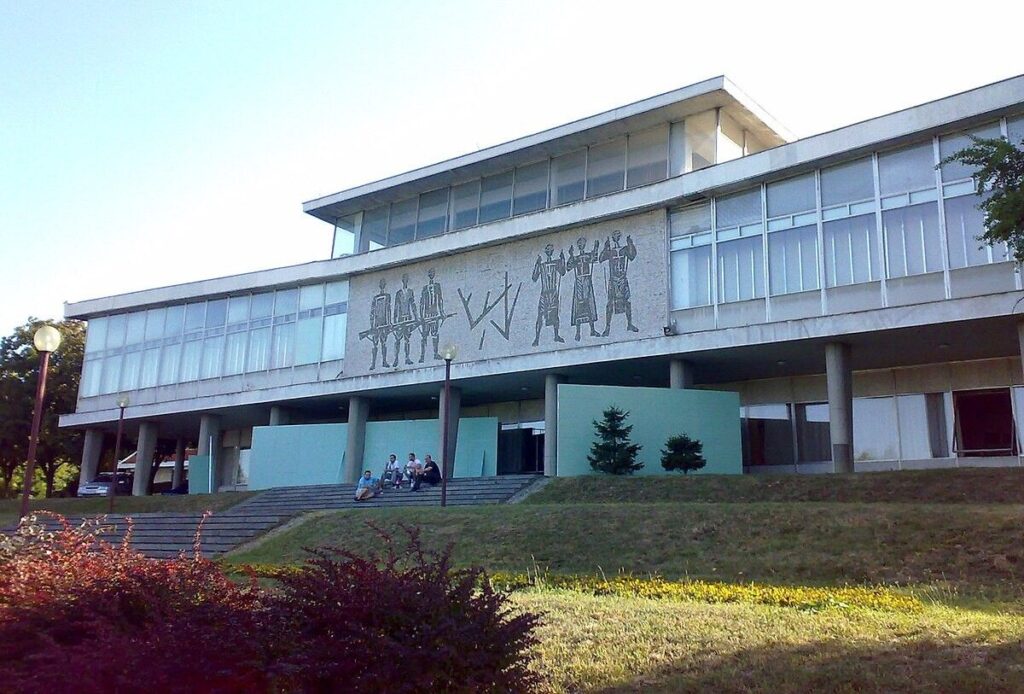
Tucked away in Belgrade’s peaceful Dedinje district, the Museum of Yugoslavia and Tito’s Mausoleum (House of Flowers) offer a powerful and thought-provoking journey into the country’s complex 20th-century past. This cultural landmark is not only a tribute to the history of former Yugoslavia but also a personal homage to its iconic leader, Josip Broz Tito. Whether you’re a history lover, curious traveler, or someone seeking to understand the Balkans’ unique identity, this museum complex offers a meaningful and eye-opening experience.
🌟 Highlights of the Museum of Yugoslavia & Tito’s Mausoleum
• 🏛️ The Three-Part Museum Experience
The museum complex includes the 25 May Museum, the Old Museum, and the House of Flowers—each offering a different perspective on Yugoslavia’s cultural and political history. Exhibits feature personal items, state gifts, photographs, and everyday artifacts that reflect life in the socialist federation.
• ⚱️ Tito’s Mausoleum – House of Flowers
Originally designed as Tito’s winter garden and workspace, the House of Flowers became his final resting place after his death in 1980. Surrounded by white marble, indoor plants, and soft lighting, it is a serene and reflective space where visitors can pay their respects to one of the most influential leaders of the 20th century.
• 🎁 Gifts from the World
Throughout the museum, you’ll see an impressive collection of diplomatic gifts given to Tito from world leaders, artists, and foreign dignitaries—ranging from traditional batons used in Youth Day parades to exotic sculptures and space mission memorabilia. These artifacts reflect Tito’s global influence and the unique position Yugoslavia held during the Cold War.
• 🕊️ Everyday Life & National Identity
Beyond politics, the museum also explores everyday life in Yugoslavia—its art, culture, and identity. You’ll find vintage posters, fashion items, ethnographic objects, and multimedia displays that bring to life the spirit of a nation that no longer exists but still lives in memory.
• 🌳 Lush Grounds & Outdoor Sculptures
Set within a 3-hectare park, the museum complex is a quiet and leafy escape from the city. Outdoor sculptures, flower beds, and walking paths make it a pleasant place to reflect after viewing the exhibits.
🚶 How to Get There
• By Public Transport:
Take buses or trams to the Dedinje or Mihaila Mike Jankovića stops, followed by a short walk through the residential neighborhood.
• By Taxi or Car:
Taxis are a convenient option. Limited parking is available along the perimeter of the museum complex.
• On Foot or by Bike:
The museum is about a 15-minute ride from central Belgrade. Bike racks are available near the entrance.
🕒 Visitor Information
• Opening Hours:
Typically open Tuesday to Sunday, from 10:00 AM to 6:00 PM. Closed on Mondays and public holidays.
• Tickets:
Admission is around 600 RSD for adults, 300 RSD for students, and free for children under 10. Entry includes access to all three buildings.
• Time Required:
Plan to spend 1.5 to 2 hours to fully explore the exhibitions and visit the mausoleum.
• Accessibility:
The museum buildings are mostly wheelchair-friendly, with ramps and wide pathways. Some outdoor areas have gentle slopes.
💡 Travel Tips
• 🎧 Take a Guided Tour or Audio Guide:
Guides provide fascinating insights into Yugoslavia’s history, Tito’s personality, and the meaning behind the exhibits.
• 📸 Photography is Welcome:
You can take photos in most areas—but please be respectful around the mausoleum.
• 📅 Visit on May 25 (Youth Day):
This was Tito’s official birthday and still draws visitors who come to leave flowers and pay homage.
• ☕ Enjoy the Garden Café:
Relax with a coffee or snack at the small museum café surrounded by peaceful greenery.
• 🛍️ Stop by the Gift Shop:
Pick up unique souvenirs such as Yugoslav-style posters, books, and retro memorabilia.
The Museum of Yugoslavia and Tito’s Mausoleum offer more than just a history lesson — they provide an emotional and immersive look into a nation that once united diverse cultures, languages, and peoples. With a blend of memory, symbolism, and personal storytelling, this complex stands as a reminder of both Yugoslavia’s legacy and the global presence of Josip Broz Tito.
💡 Local Travel Tips
- 👟 Wear comfy shoes: Cobblestones are charming, but brutal on the feet!
- 🍲 Try local food: Ćevapi, sarma, kajmak, ajvar, and burek for breakfast
- 🍷 Don’t miss rakija: Local brandy in plum, quince, or apricot — potent but tasty!
- 📶 Free Wi-Fi: Most cafés and public areas offer fast Wi-Fi
- 🚕 Use apps: Use CarGo or Naxi Taxi for safe and reliable rides
🌟 Final Thoughts
Belgrade is a city of bold contrasts — ancient ruins beside brutalist architecture, soulful traditions dancing with rebellious creativity. It’s raw, real, and refreshingly unpolished, yet full of life and warmth.
Whether you’re gazing at the Danube from a fortress wall, sipping rakija in a smoky bar, or dancing on a riverboat till sunrise — Belgrade leaves its mark on your heart. ❤️🇷🇸
So pack your curiosity, bring an appetite for adventure, and let Belgrade show you how history, culture, and nightlife can come together in one unforgettable destination. ✈️

I’m Shreyash Mhashilkar, an IT professional who loves building user-friendly, scalable digital solutions. Outside of coding, I enjoy researching new places, learning about different cultures, and exploring how technology shapes the way we live and travel. I share my experiences and discoveries to help others explore new places, cultures, and ideas with curiosity and enthusiasm.

